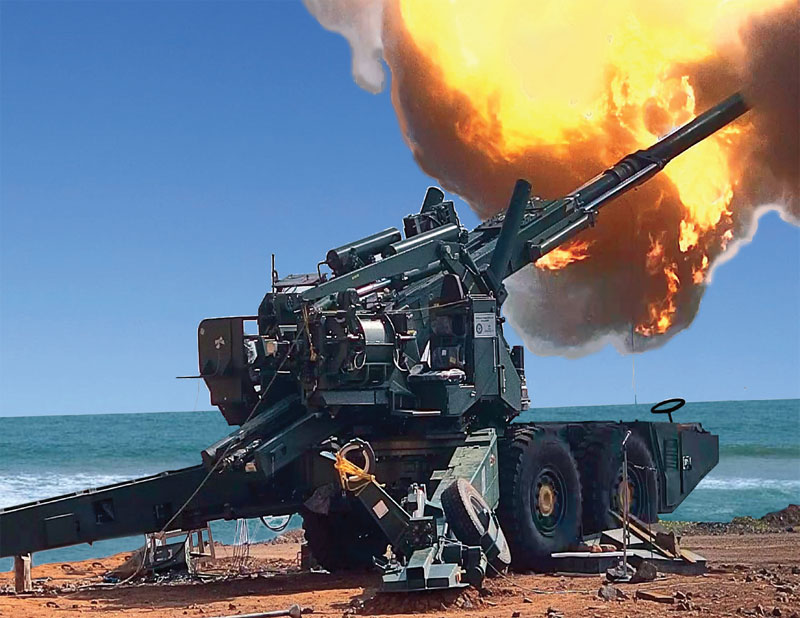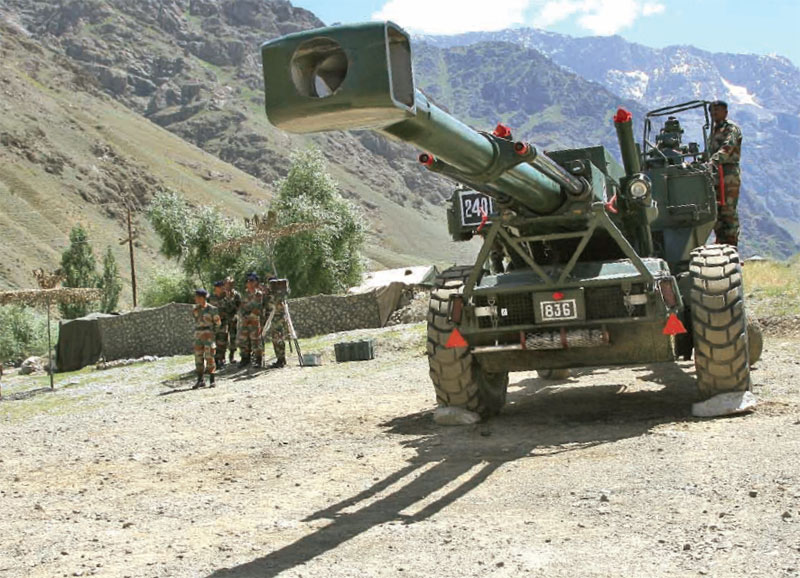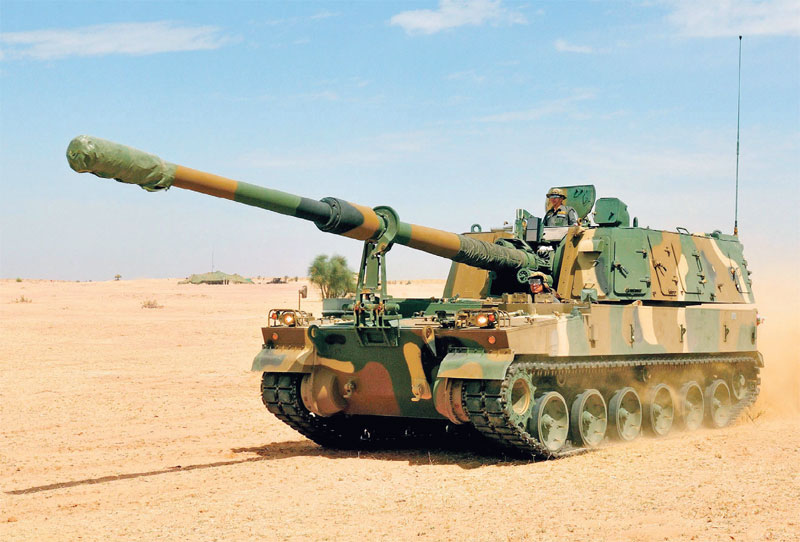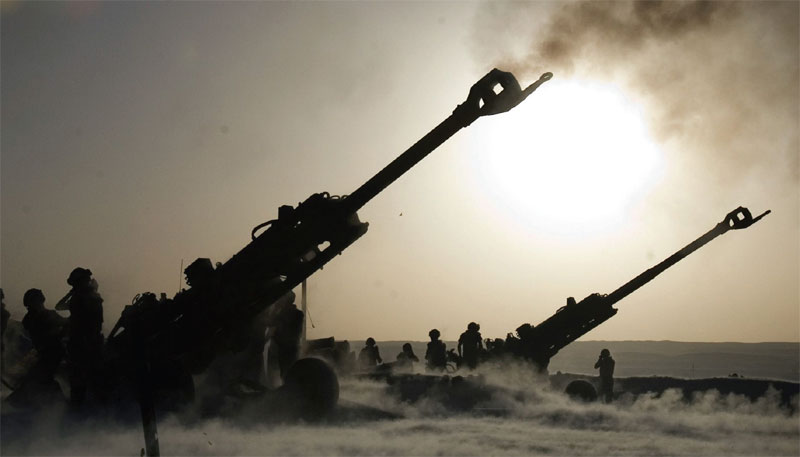Prospect of two front war in high altitude poses many challenges for India
 Maj. Gen. Atanu K Pattanaik (retd)
Maj. Gen. Atanu K Pattanaik (retd)
On a bright late July morning in 1992, the pilots of the Army Aviation base in the Shyok River valley had lined up in their bright blue flying overalls for the annual administrative inspection. To reach the Shyok valley located at 12,600 feet and hemmed in by two mighty ranges, one had to cross the awe-inspiring Khardung la, the highest motorable pass in the world at 18,380 feet. Winding channels of the Shyok that originates from the Rimo Glacier and the Nubra river that flows from the snout of the Siachen glacier and joins at Diskit crisscross the wide and flat valley.
In July, the patches hugging the streams are lush green interspersed with shades of orange and yellow. Double humped Bactrian camels lazily swoosh around, adding a surreal beauty to the flight location that is otherwise drab and depressing. In the early nineties there used to be no electricity, telephone connectivity, feeble satellite dish TV reception and a local market that traded its summer cabbages and greens as well as chicken using a barter system. Money did not count for much then in this outlier.
The brigade commander duly arrived and was ceremonially received by the flight commander. As the pilots were being introduced, highlighting their flying ratings such as Master Green etc, a Jonga with a staff officer from the HQs screeched to a halt. The officer whispered something into the commander’s ears and the inspection came to a halt. We were instructed to quickly grab our flying helmets and maps and run to the helicopters neatly parked for the inspection. An emergency had been reported from a company post in the southern Siachen Glacier.

In the mid-eighties a chance reconnaissance expedition by the famous mountaineer, Col Narendra Kumar, had led the Indian Army to launch Operation Meghdoot in 1984 to secure the icy heights from an evident Pakistan aggression. If he had not undertaken this expedition, all of the Siachen Glacier, an area covering almost 10,000sqkm, would be of Pakistan today. This is how the highest battlefield in the world took shape. Siachen assumes strategic significance for India, Pakistan and even China because it forms a hub between Shaksgam Valley, Karakoram Pass and Aksai Chin. Therefore, holding Siachen is vital for India to prevent ingress not only from Pakistan but also from China. Life is tough at the Siachen Glacier, spread over a 76 km area, due to sub-zero temperatures that dip below minus 60 degrees Celsius, constant threat of avalanches, crevasses on the glacier, high-speed winds, and a range of potentially fatal altitude-related ailments like hypoxia.
Constant grab action attempts by Pakistan were then common. There was one such intrusion attempt in July 1992, wherein Pakistan troops occupied a peak close to the point NJ9842 that was routinely vacated at night. They heli-dropped a commando team of four at another peak overlooking our company posted at 17,000 feet. This allowed them to direct accurate and lethal artillery shelling on our posts tactically located on the reverse slopes. It is otherwise extremely difficult to hit targets behind the hills screened by the heights and leads to wastage of ammunition.
The engagement lasted all of four days when a hand-held shoulder-fired air defence missile inducted just before daybreak was directed at a Pakistani helicopter carrying out a reconnaissance mission. White flags immediately came up on the other side, seeking a cease-fire. It later transpired that the Pakistani helicopter that was blown to bits had on board the brigade commander and a battalion commander of the attacking forces along with the two pilots.
That grab action by Pakistan would not be the last despite suffering severe losses. Barely seven years later, the Kargil War took place on 8 May 1999 when Pakistani forces and Kashmiri militants were detected on the Kargil ridges. The intruders were both professional soldiers and mercenaries, including battalions of the Pakistan Army’s Northern Light Infantry. There were also members of Pakistan’s Special Services Group and the mujahideen.

As the war dragged on, it was soon felt that only massive and sustained firepower could destroy the intruders’ sangars. Accurate, relentless and unforgiving, the guns blazed day and night in the summer of 1999, reducing the formidable bunkers on the lofty heights of Kargil to rubble. The Indian Army concentrated more than 20 artillery regiments of 105mm guns, 155mm Bofors, 120mm mortars and Grad BM21s. They would fire approximately 5,000 artillery shells, mortar bombs and rockets on a daily basis. Overall, it is said that during the Kargil conflict the Indian artillery fired over 2,50,000 shells, bombs and rockets. It is said that such a high rate of fire over a long period had not been witnessed anywhere in the world since the Second World War. The audacious and chilling counter attacks on Tololing, Tiger Hill and Pt 4875, later re-named Gun Hill, which became household names because of the live coverage on TV, were led by sustained fire assaults. They wreaked havoc and prevented the enemy from interfering with the assault. The 155mm Bofors medium guns and 105mm Indian Field Guns destroyed all visible enemy sangars and they were forced to abandon their positions.
Bofors was obviously the star of the show. The importance of lightweight, agile, medium-range gun systems in the mountains along the line of actual control (LAC) and the line of control (LC) was proven beyond doubt. Yet it took another 17 long years before a deal for 155mm M777 ultra-light howitzers was signed in 2017. After more than 30 years the Bofors ghost has ultimately been exorcised from the psyche of officials in the procurement loop. Operationally, the M777 ultra-light howitzer is a major force multiplier though its cost benefit ratio is highly debatable. Its lightweight of about 4,000 kg gives it strategic mobility in the mountains. It is the only gun of its class which can be heli-lifted or air-ported, either under-slung or strapped within. With other inductions like the 155mm 45 calibre Dhanush gun and 155mm 52 calibre self-propelled tracked K9 Vajra gun there is a new lethal dimension shaping our artillery during future wars.

Many lessons were learnt as the Kargil war progressed. Many innovations in artillery ammunition management, gun placement, fire direction and safety distance parameters were put into practice and ‘sanctified teachings’ jettisoned as the situation warranted a rethink on long-held doctrines and tactics. Dummy gun positions were prepared. Ammunition stocks were steadily built up. In an era where there were no drones or satellites, young forward observation officers and battery commanders fought shoulder to shoulder with the infantry in all assaults. They brought down sustained and accurate overwhelming artillery fire on relatively small areas atop precipitous slopes to blast the Pakistanis into grave destruction. Firing by guns in the steep slopes was so accurate that the infantry would at times call for artillery fire as close as 40 m, well below the acceptable safety distances. The Kargil battle threw up all the major challenges that the artillery faces in high and superhigh altitudes. It tested the mental agility, resourcefulness and ingenuity of the gunners and commanders to the extreme and provided a valuable guide to shaping our fire power prowess for the future battles.
India must prepare for two conflict zones that are likely to get activated in any future standoff. They straddle high-altitude along the 740 km LoC with Pakistan and the 3,488 km LAC with China. In the mountainous terrain there is a major problem of limited axis for induction and inter-valley movement of guns and ammunition. The deployment areas are limited owing to space and crest clearance problems and are highly predictable making them vulnerable to counter-bombardments by the enemy. The deployment of shoot-and-scoot guns, tactical missiles and rocket systems assisted by good road infrastructure to facilitate rapid re-deployment is an absolute necessity to overcome this constraint.
Road space and convoy management was a big issue during the Kargil operation as ammunition convoys ended up in the wrong valleys because of lack of guides and confusion created by inducting units from all over the country without organic formation HQs accompanying them for command and control. Wrong types of ammunition reached many gun areas and sometimes shells were delivered without fuses. As a commanding officer in that sector, I would later be asked to do a study on ammunition mismanagement during the Kargil operations.
High-altitude deployments demand extensive acclimatisation of troops and induces fatigue because of weather and terrain as well as lack of oxygen. If not careful, troops become susceptible to lack of appetite, nausea or vomiting, exhaustion or weakness, dizziness, insomnia, pins and needles, shortness of breath upon exertion leading to hypoxia, acute mountain sickness and high-altitude pulmonary oedema. On the technical side, the met changes frequently requiring more DIGICORA sets as correct met inputs are vital to accuracy of fire. Communications become difficult due to screening effect and many repeater stations are required as are a greater number of observation posts and Fire Direction Centres.
In the over two decades since the Kargil conflict, many new dimensions have been added to fire power and observation in the field of artillery. One significant dimension is the extensive use of conventional missiles and drones, including what are being termed as ‘suicide drones. It is reported by the west that some of these Kamikaze drones from Iran are being used by Russia to wipe out Ukraine’s energy infrastructure. Earlier, the 44-day Azerbaijan-Armenia war over the disputed region of Nagorno-Karabakh in 2020 provided a foretaste of the decisive impact that these capabilities can exert on the outcome of a war. Azerbaijan was able to reconquer lost territories from Armenia by military means even after a long period of time and against an entrenched and militarily well-prepared opponent. Drone warfare capabilities provided to Azerbaijan primarily by Turkey proved to be the gamechanger for Azerbaijan.

Experiences from hybrid warfare battlefields in Ukraine, Syria, Libya and Yemen underline the growing importance and effectiveness of drones, missiles and long-range shoot-and-scoot guns and rocket systems like the HIMARS. A trend towards artificial intelligence-based autonomous systems and swarming will bring masses of drones into the battlespace. Drones integrate sensor technology with precision strike effectors and communications. In this sphere India must contend with China, a country that has become one of the world’s largest exporters of armed UAVs.
The importance and value of artillery has been reinforced in the Ukraine war raging since February 2022. The US-led west is trying to boost the Ukrainian effort by providing advance missile rocket systems like M142 HIMARS and drones alongside precise intelligence. Russia’s employment of artillery has re-opened a facet of warfare which had long since been forgotten—that war is a violent endeavour in which victory often goes to the side with big guns. The Ukraine war will be analysed minutely by the Chinese. They will go into details about the way Russia and Ukraine have employed artillery amongst other things. China also lays great emphasis on firepower and employment of rockets and missiles. It also lays a lot of emphasis on fighting wars under conditions of informatisation using precision strike capabilities to paralyse enemy operational systems as part of their system destruction warfare. Hence imbibing lessons from this war and adapting to a future scenario in high altitudes will be high priority for India.
Since the Galwan incident of June 2020, tens of thousands of troops have been deployed in the icy heights of the LAC. They suck in huge logistical resources, including special clothing, heating arrangements, acclimatisation shelters and light weight fortification material. Border roads are being developed on a war footing and forward airstrips are being reactivated. For rocket artillery, adequate arrangements are being made for their hides, preparation areas, launch sites and getaway positions. The outlier communities are being assimilated to provide the desired support base for robust defence of our territories. The standoff with China in eastern Ladakh and Arunachal Pradesh at Tawang has once again brought to light India’s dire need for ramping up research and production of indigenous weapon systems, dumb and smart ammunition and satellite based navigational systems.
The war in Ukraine has demonstrated that future wars are unlikely to be short and swift, the way it was doctrinally driven into the Indian military minds. Some even questioned the wisdom of stockpiling 30 days intense rate of ammunition 30 (I) for artillery. These will need a serious rethink and review. Domestic production capabilities like the manufacture of 155mm/52 calibre Vajra and Sharang gun systems need a serious ramp up. We also need to boost our stockpile of missiles—guided, cruise and hypersonic such as the Agni series and BrahMos to somewhat match the formidable Chinese Rocket Force effectively. In the Kargil war, what saved the day was the fact that the astute political leadership in India ensured that the conflict did not escalate by carefully calibrating our response and exercising utmost restraint. In a limited geographical expanse to which the war was confined, we could muster all Bofors guns and munitions to carry out our operations. A wider conflagration will give us no such luxuries.

